The challenge
Almost half the world’s habitable land is now farmed to feed our global food production system. What happens on these farms will determine our biodiversity, climate and future health.
A unique opportunity exists to harness the power of farming and land use to address the challenges of climate change, biodiversity loss and declining public health through the introduction of a common framework to monitor farm sustainability.
However, there are barriers that prevent farmers becoming drivers of positive change.
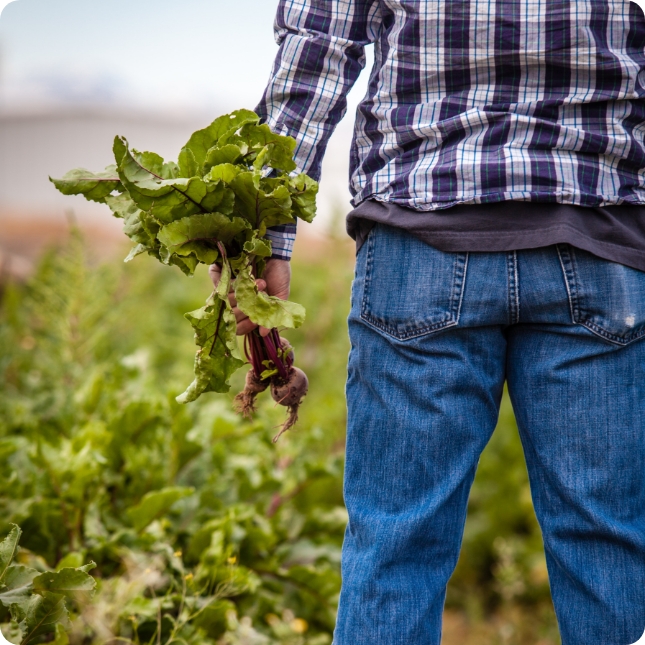
The solution
The Global Farm Metric defines on-farm sustainability and supports farmers to understand, measure and monitor the state of their farming system in a consistent way.
Evidenced based and evolving, the framework is supported by our coalition of researchers and farmers so that data collection is both practical and useful for farmers, and so that it generates a common language between farmers and other food and farming stakeholders.
The framework provides a holistic overview of farm sustainability. The 12 central categories of the framework make up all of the elements of the farm system so none is considered in isolation and farmers are better equipped to mitigate negative consequences in other areas. The sub-categories describe each of these in more detail and, together, encompass all aspects of farm sustainability. The indicators go one step further and demonstrate how farm sustainability can be evaluated in assessments so that farmers can track their progress towards environmental, social and economic outcomes.
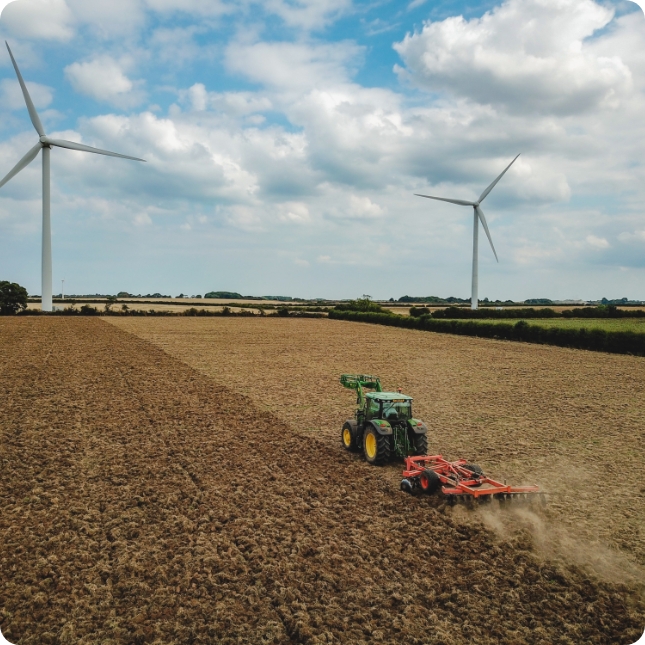
The framework
Click here to explore the Global Farm Metric categories, subcategories and indicators.
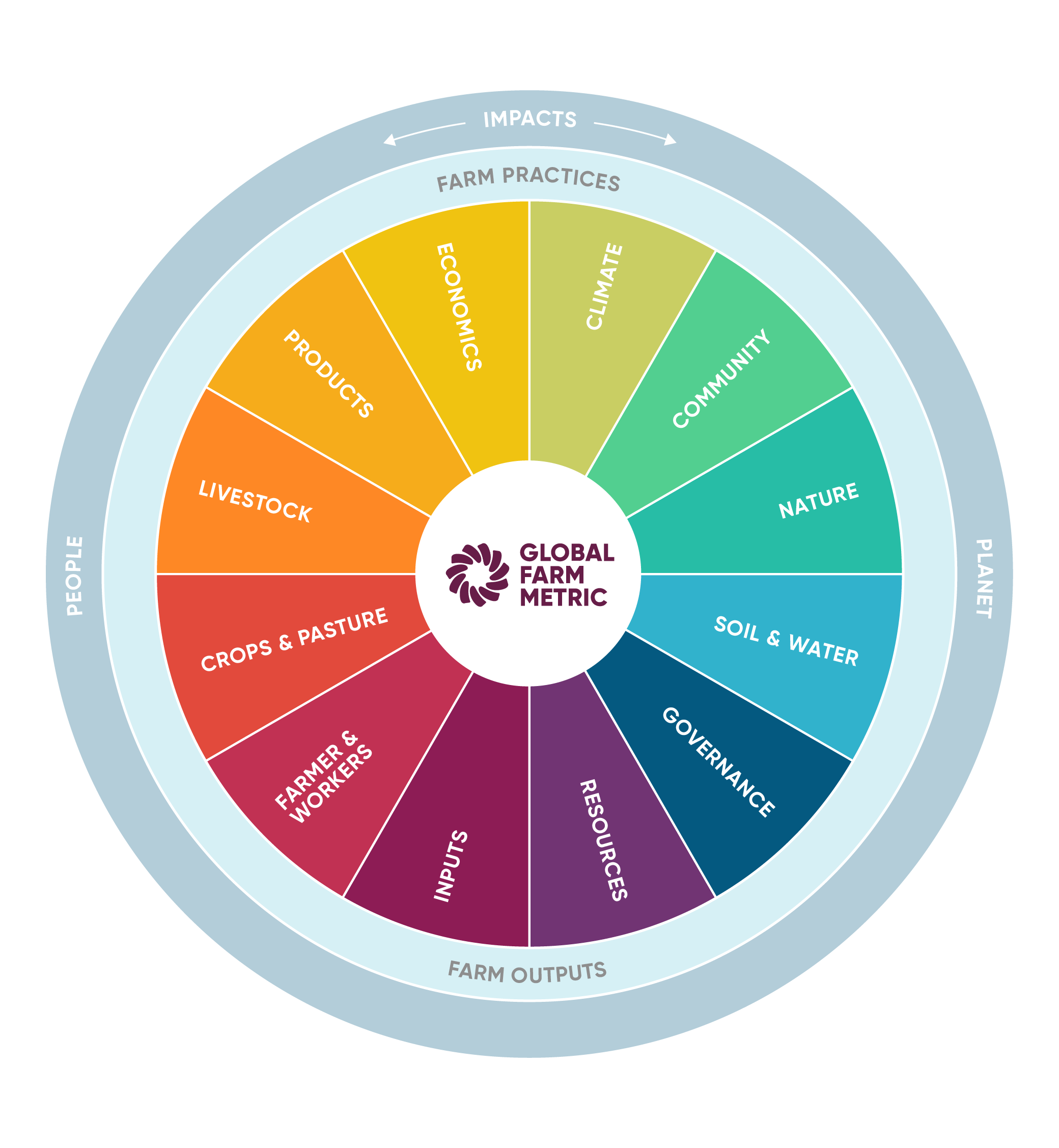
Key features
Global Farm Metric
Holistic
Covers social, economic and environmental dimensions of the farm, recognising synergies and multi-stakeholder perspectives.
Aligned
Can be embedded within assessments, tools and frameworks, creating a common language to drive consistency and collaboration
Practical
Can underpin primary data collection that is useful and relevant at farm-level
Outcomes-based
Identifies shared goals across the farming industry and the indicators to monitor progress towards them
Inclusive
Inclusive of and applicable to all farming systems and landscapes
Evidence-based and evolving
Developed from farm trials and scientific research
Drives change
Enables collective action for nature, climate and people
Driving change
A common language drives positive action. It enables shared understanding, a supporting policy and economic environment and informed consumer choice.
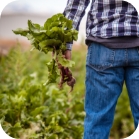
Farmers
For farmers to be a driver of positive change, they must have a holistic understanding of sustainability and be financially rewarded.
A common framework enables consistent monitoring of the environmental, social and economic state of the farm. This helps farmers identify and manage risks, improve resilience, increase positive impacts and mitigate the negative impacts of the farm on the wider world.

Government and policy
For farming to be part of the solution, governments must create an enabling policy environment and monitor progress at farm level.
The Global Farm Metric provides a baseline of farm-level data which can be aggregated to track change at a local, national and international scale.
The holistic nature of the GFM framework also helps governments to identify the unintended consequences of policies that are focussed on one aspect of sustainability. It can also identify issues beyond the agriculture sector which need addressing to enable effective change.

Finance industry
For financing the transition towards more sustainable systems, we must have a common baseline of data.
A common framework can support sustainable investment by the finance industry, informing farm support payments, access to new markets, and ESG reporting.
This helps to create a supportive economic environment that rewards farmers who are actively improving the environmental, social and economic state of their farm.
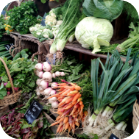
Food business
For food businesses to support more sustainable producers, they need comparable information on whole-farm sustainability.
A common framework and baseline enables food businesses to assess the sustainability of the farms from which they source their products across social, economic and environmental indicators.
As well as streamlining internal reporting, this can create a positive market incentive that rewards more sustainable farming.
A common framework of measurement and pool of on-farm data can also help agri-tech companies understand the impact of practice change and develop appropriate technologies.

The public
For citizens to mobilise consumer power, we need consistent and verifiable information.
A common language enables transparency and accountability across the supply chain. It can align food labelling and raises awareness of whole-farm sustainability.

Educators
For knowledge exchange that inspires innovation and drives change globally, we need a shared understanding of sustainability at farm-level.
Expressed through the Global Farm Metric framework, a common understanding of on-farm sustainability will enable dialogue between educators, learners, consultants and farmers.
Frequently asked questions
Still have questions? See this document for further FAQs. You can also contact us via info@globalfarmmetric.org or @GFMCoalition on Twitter, LinkedIn and Instagram.
